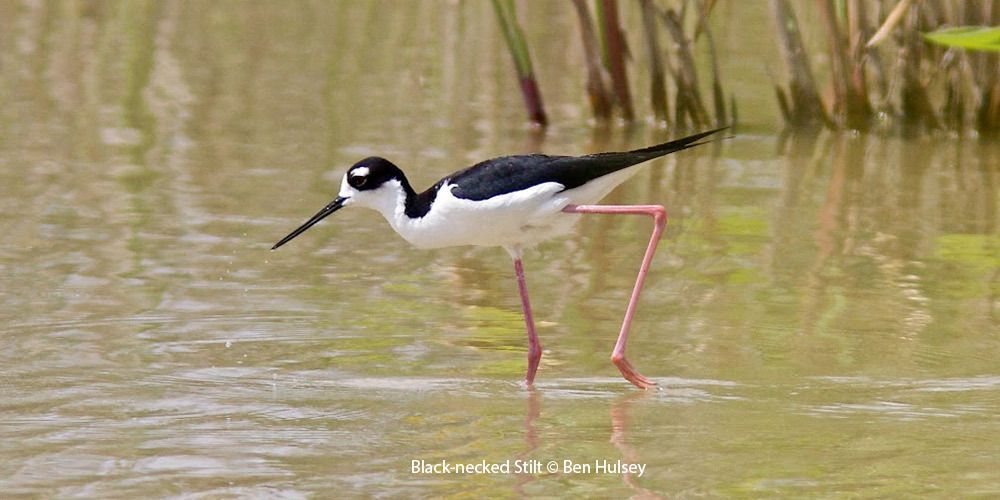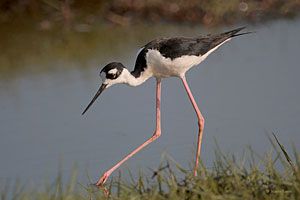
© Joanne Kamo
Black-necked Stilt
Himantopus mexicanus
Family: (Recurvirostridae) Stilts and Avocets
Preferred Habitat: Shallow marshes and lakes
Seasonal Occurrence: Common spring through fall; uncommon in winter. Breeds in our area.
Profile by Will McDaniel: The Black-necked Stilt is a medium-sized shorebird with a thin, oblong 13-14 inch body suspended on a pair of comically long pink legs, with black upperparts and wings, white underparts and ‘eyebrows’, and dark red eyes. Their eponymous ‘stilts’ notably represent the second longest legs in relation to body size among birds, surpassed only by the flamingo. During breeding season, males can be distinguished by a greenish sheen to their darker plumage, whereas females display a more brownish color. A resident of wetlands and estuaries, these birds can be seen delicately wading through pools of still water, using their long black beaks to probe the mud for aquatic insects and crustaceans.
Though populations elsewhere in United States migrate to Central and South America for the winter, the Black-necked Stilt can be found on the Texas coast year-round, where they are usually seen in pairs. During the spring, Stilts will nest in colonies near the shores of lakes or other bodies of water, building their nest on bare ground rather than relying on concealment. Dutiful parents, both males and females take turns incubating the nest, dipping their belly feathers in water to keep the eggs cool on hot days.
When a predator approaches the nest, one of the parents will execute the classic ‘broken-wing’ maneuver popular among other shorebirds such as plovers, in which they will pretend to be sick or injured in order to lure the predator away from the nest before escaping. Colonies of Black-necked Stilts will also attempt to scare away predators by jumping up and down en-masse, flapping their wings and causing a great ruckus in what is sometimes referred to as the ‘popcorn’ display due to its resemblance to popping kernels.
Profile by Grace Yaros: Black-necked Stilts are striking, elegant shorebirds; they are white below with black wings, backs, and heads. Their exceptionally long legs are bright bubblegum pink. They are quite vocal and conspicuous, especially during the breeding season.
Black-necked Stilts favor shallow, open wetlands with little vegetation, and may be found in saltmarshes, mudflats, sewage ponds, and flooded agricultural fields. They feed primarily on aquatic invertebrates but are also known to eat fish. They have a rather extensive distribution, and breed in western and southern North America and throughout Central and South America and the Caribbean. They nest on the ground, usually on a small island or clump of vegetation above the surface of the water. Black-necked Stilts are fiercely protective of their nests and chicks; adults will perform distraction displays to draw ground predators away from eggs and young and will mob and strike both ground and aerial predators. They will also perform “popcorn displays”, in which a group of nesting adults will form a circle around a ground predator and flap their wings and call to drive it away from a nest or chicks.
A subspecies of Black-necked Stilt found in Hawai’i, known as Ae’o, is currently endangered due to a variety of factors, including overhunting, invasive species (including ground predators and invasive plants that encroach upon open wetlands), and destruction of wetlands. Black-necked Stilt populations in North America are apparently stable, though destruction of the wetland habitats these birds rely on is a major concern. Pollution and invasive species also reduce the number of high-quality open wetlands for stilts to breed and forage in. Black-necked Stilts are year-round residents along the Gulf Coast and can be found at Bolivar Flats Shorebird Sanctuary and along the Shoveler Pond Loop at Anahuac National Wildlife Refuge.
-
Cornell Lab of Ornithology
-
Bird Guide
-
Bird Library
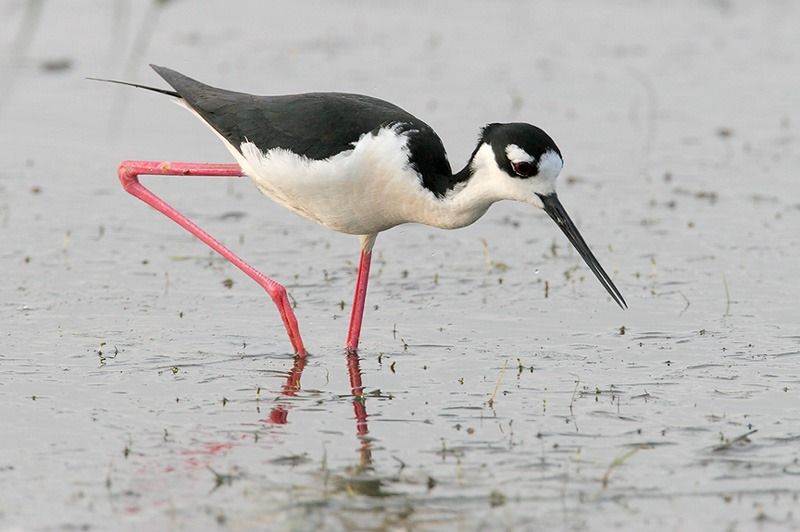
© Greg Lavaty, www.texastargetbirds.com
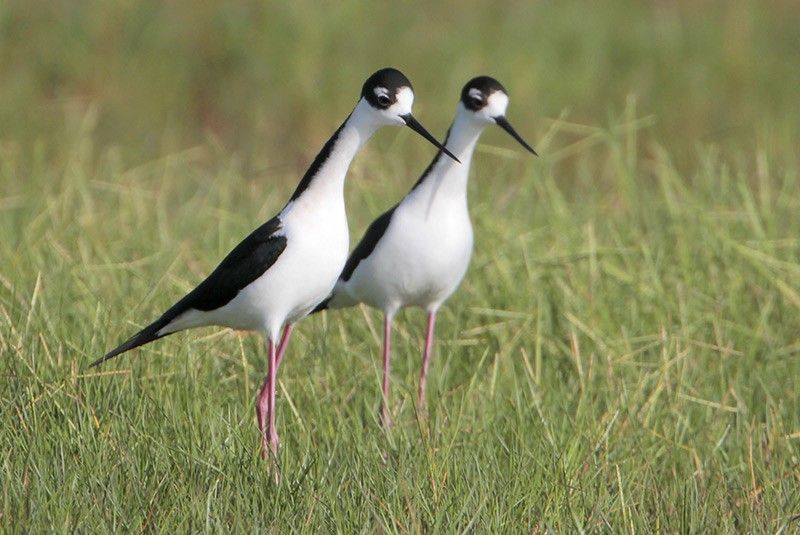
© Greg Lavaty, www.texastargetbirds.com
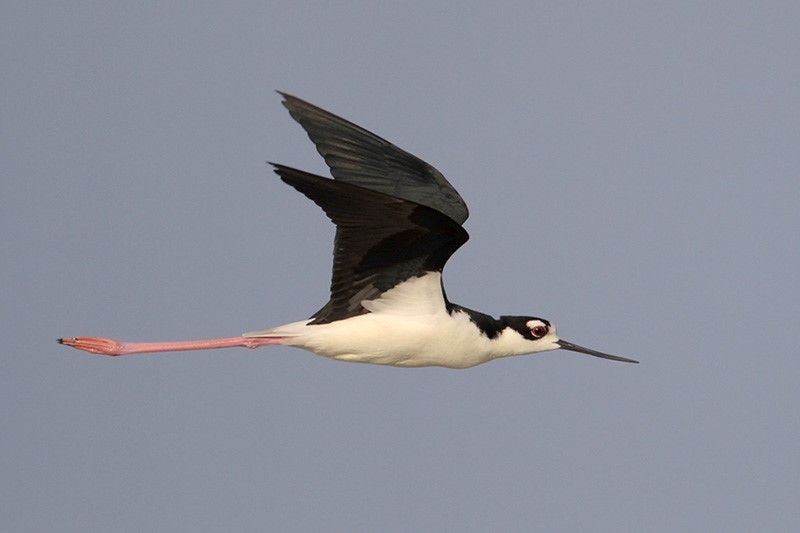
© Greg Lavaty, www.texastargetbirds.com
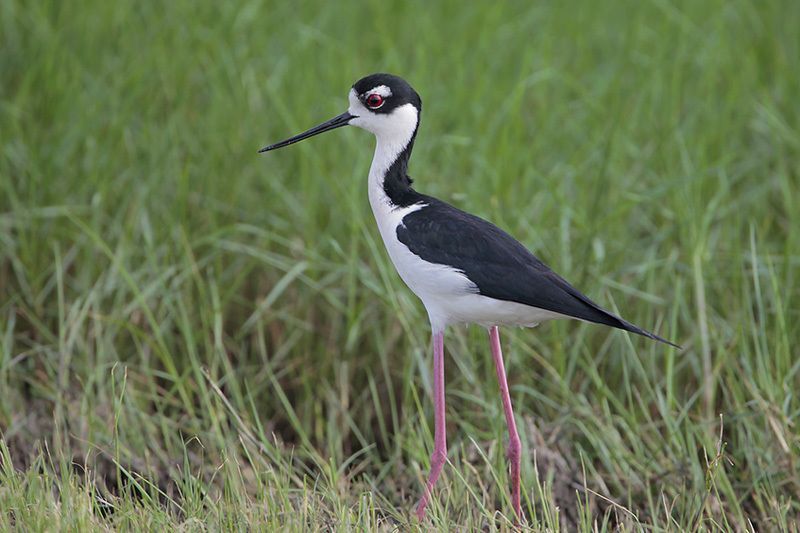
© Greg Lavaty, www.texastargetbirds.com
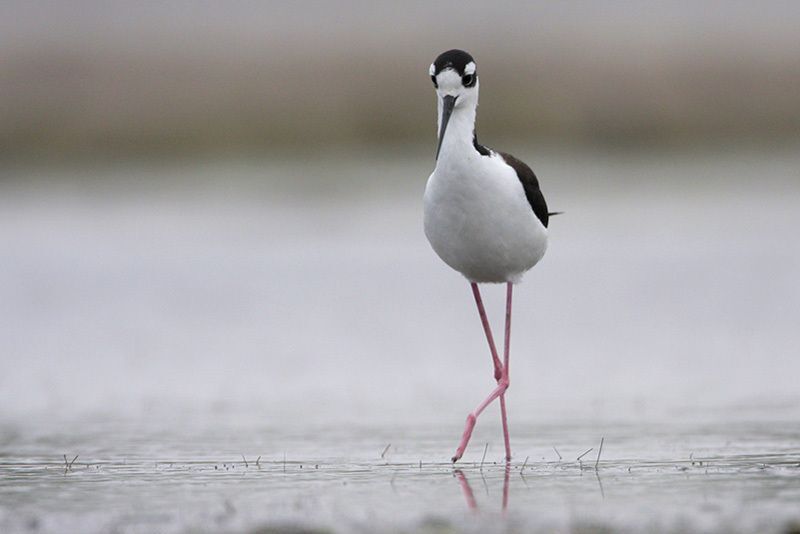
© Greg Lavaty, www.texastargetbirds.com
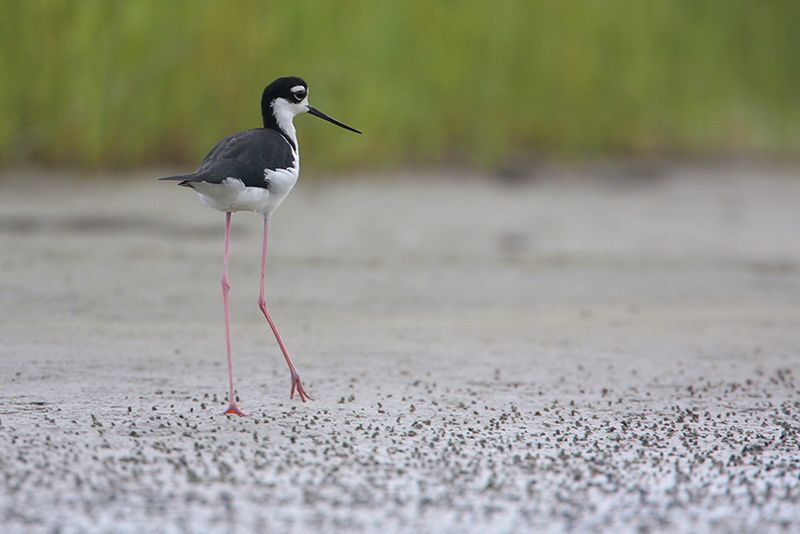
© Greg Lavaty, www.texastargetbirds.com

